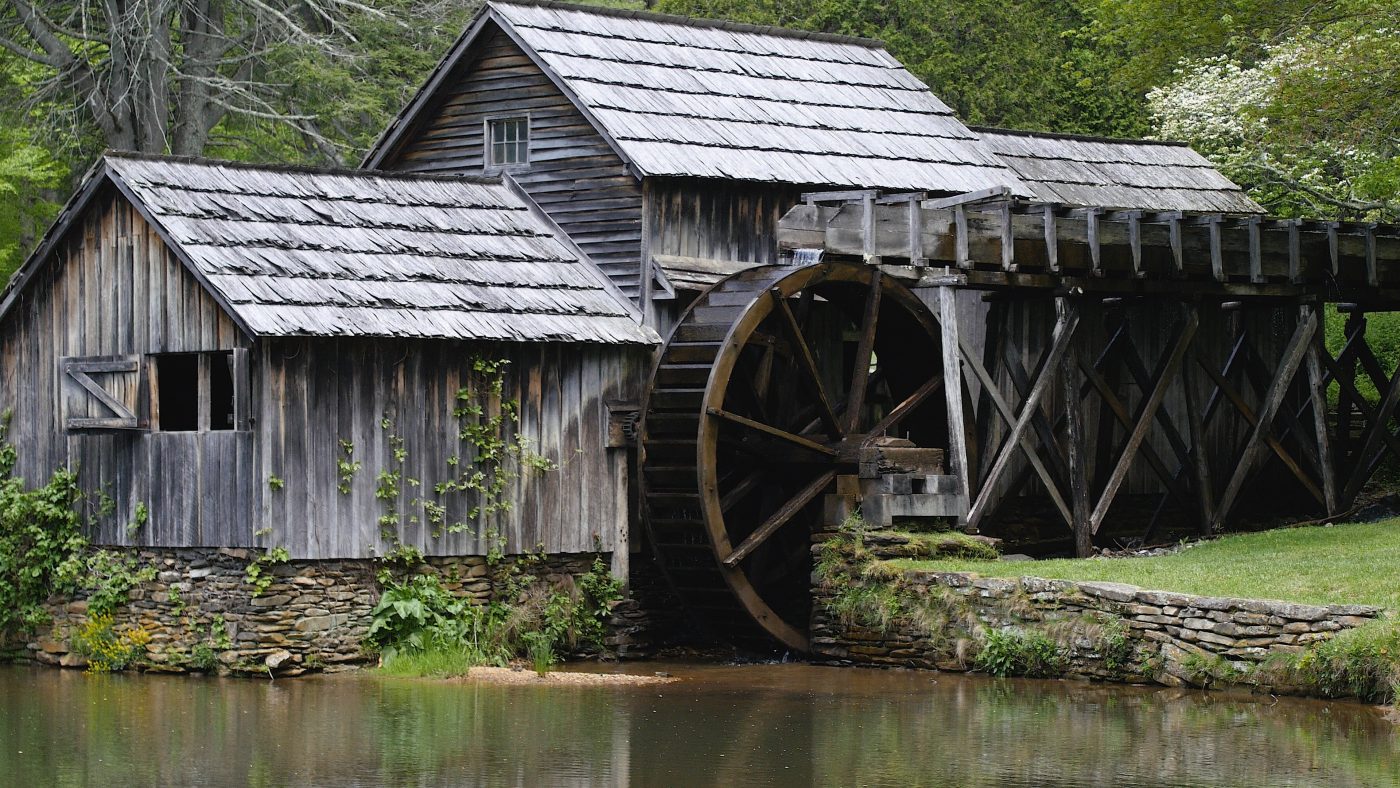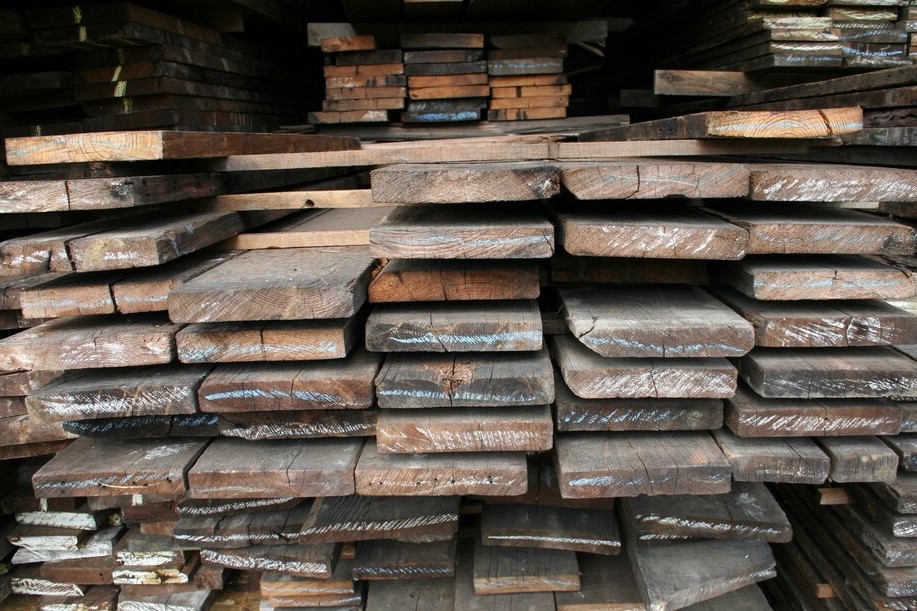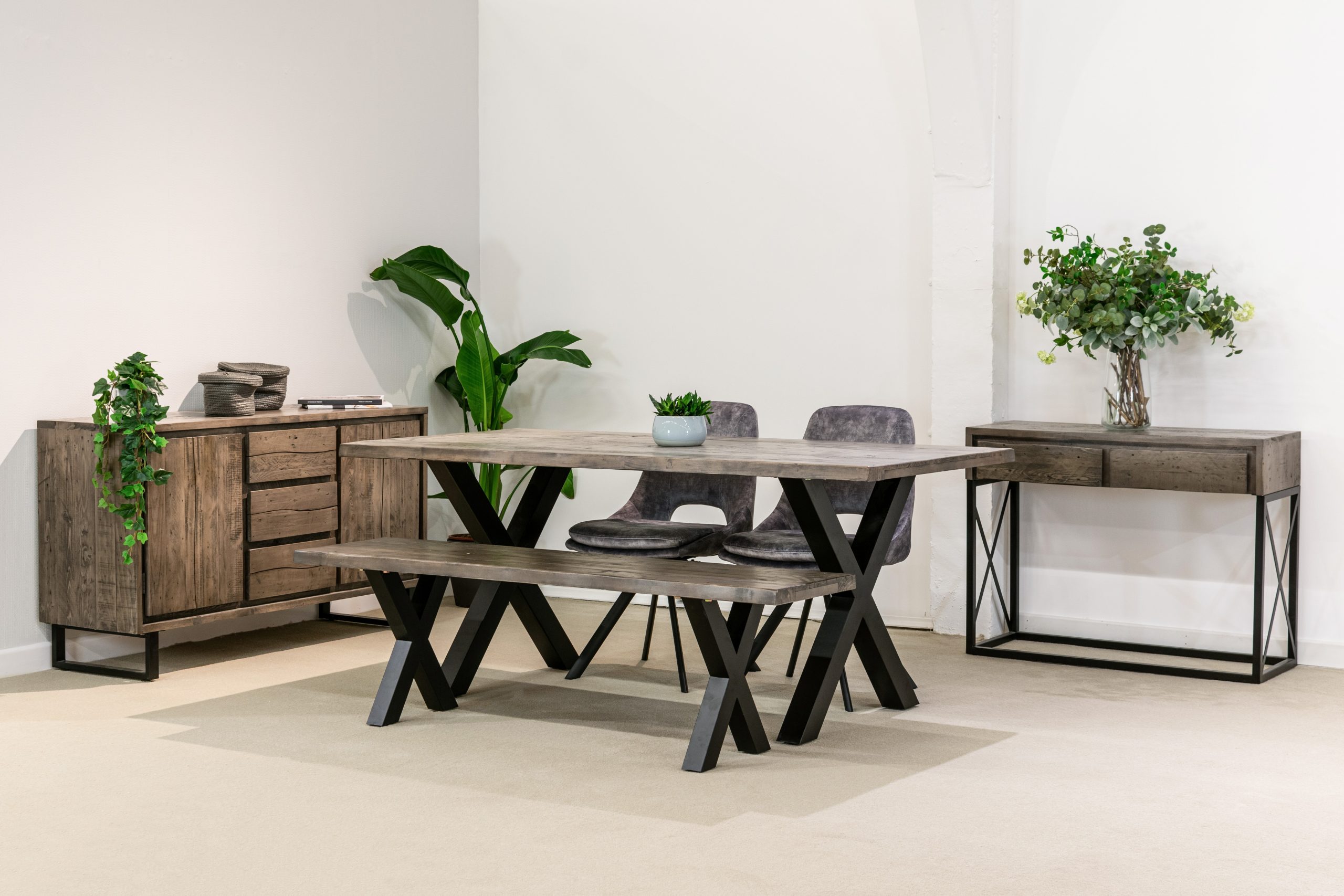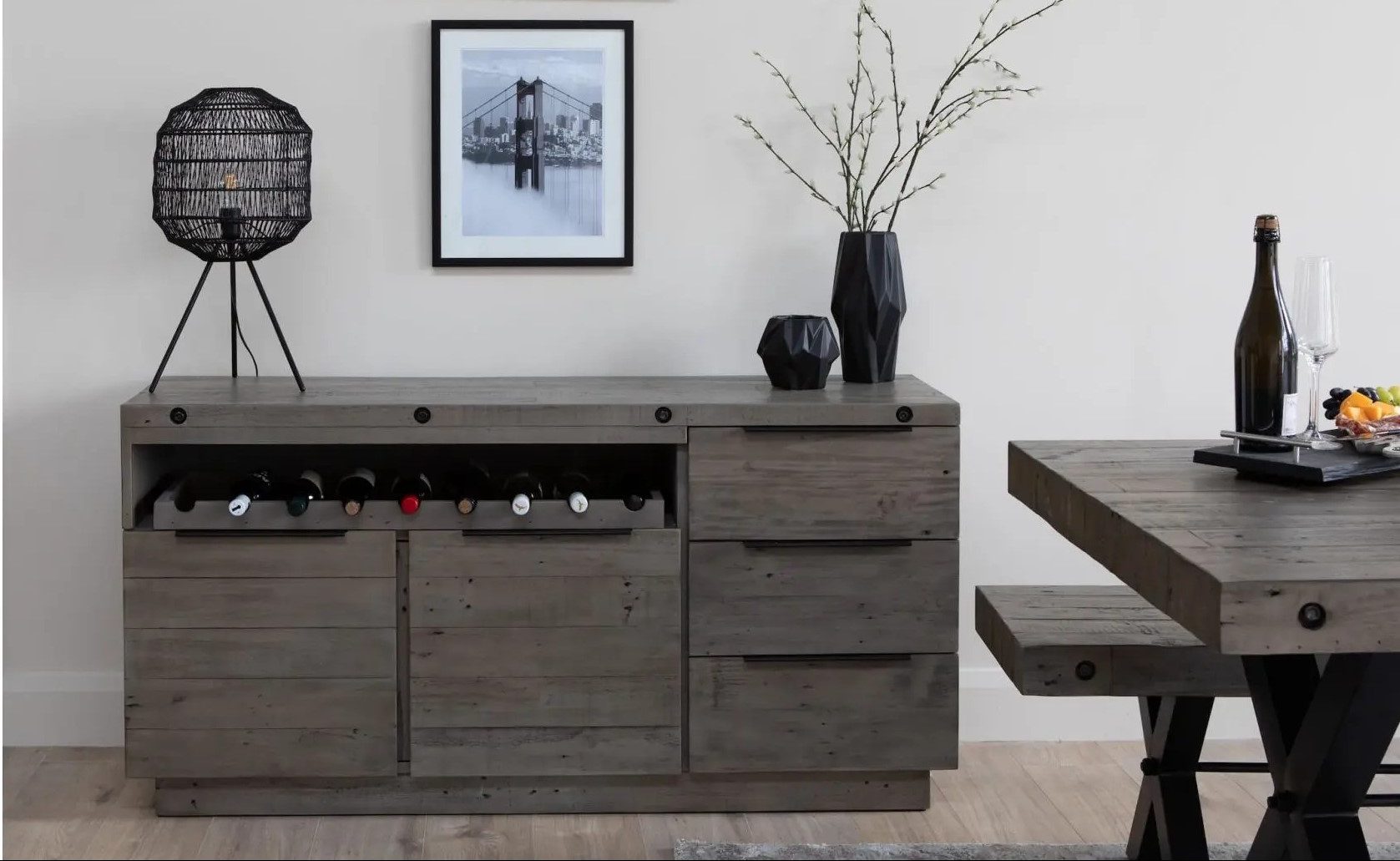THE STORY OF RECLAIMED WOOD
Reclaimed timber has a past and has been used for buildings and structures from the 18th to the early 20th century – when wood was in abundance. As the industrial revolution took hold sawmills were often the core of many towns, providing employment and a plentiful supply of wood.
In recent years we’ve come to learn to protect our world and there is less wood available for construction, so we’ve looked to the ecological equivalent to newly harvested wood – reclaimed wood. The wood is recycled and reused to meet today’s ever-growing need for sustainable and eco-friendly homes and businesses.

Which woods are reclaimed?

Any species of wood can be reclaimed, but some of the most common are Douglas fir, Pine and Oak.
A rare reclaimed wood species is longleaf (heart) pine, which can take up to 500 years to mature, as opposed to the more common yellow pine which only takes 50 years. In the past longleaf pine produced enormous trees, meaning long and sturdy planks, which were the mainstay of the wood industry hundreds of years ago.
Turning old planks of barn wood into reclaimed wood furniture is a delicate and intensive process. Wood used for old barns over 100 years ago provide lumber in dimensions that are hard to come by today. Acquiring old growth Douglas fir at 6” by 12” dimensions are almost impossible to come by today. Loggers at the time these barns were constructed had the ability and freedom to choose the cream of the crop for timber, often choosing large old growth trees to harvest, which is oftentimes illegal nowadays to help preserve these heritage forests.
Why use reclaimed wood?
Antique wood is unrivaled in terms of its beauty and coloration due to the natural aging process. As the wood dries and ages, the oxidation occurring on the surface creates the patina, which is very difficult to recreate in new lumber. Reclaimed and antique wood is growing in popularity and helping to preserve tidbits of our history that can continue to be admired and enjoyed well into the future.
Besides the beautifully rustic character reclaimed wood lends to any building, modern or traditional, commercial or private, its ecological benefit is clear. The environmental impact of mass forestation throughout the world has heightened our awareness of how using reclaimed wood can help protect our future.
Coupled with this social responsibility is the desire for the authenticity of reclaimed wood that tells a story and has a history. Your kitchen table could have once been the walls of a Victorian factory, or your dresser the beams from a barn or warehouse.
Every piece of reclaimed wooden furniture in your house can make a statement; as well as demonstrating a love for the character and finish of reclaimed wood, it shows your commitment to environmental matters.
Sustainability Of Wood
All wood is considered to be sustainable, as wood can be regrown and replaced. But some woods are more sustainable than other woods. For example, pine, which is a softwood is considered to be a very sustainable wood when it is cut down to be used as it grows faster than many other hardwoods.

Recycled (Sustainable) Pinewood
At Blueberry Meadows Furniture Co,. we use recycled (sustainable) pinewood with all our collections. This wood is collected from a variety of sources, which is then clean and prepared so that it is ready to be manufactured into furniture pieces. We also combine reclaimed wood with metal, giving it a beautiful modern farmhouse look.

Blueberry Meadows Furniture
Using Reclaimed pine is a wonderful way to not only get a great look for your furniture pieces, but to also choose a material that is sustainable in every way.
Recycled and sustainable furniture is a great way to say ‘I care about the environment’. That you are choosing to have a product in your home that is not only beautiful, but you are also willing to use wood that would have otherwise been discarded.
